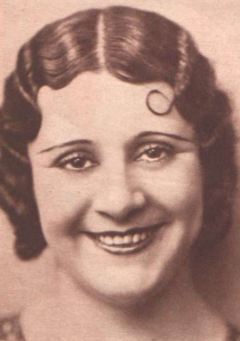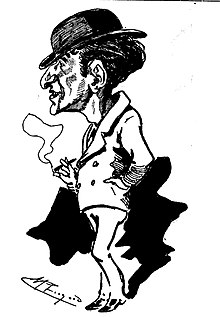
Aurelio Arteta Errasti was a Spanish painter who worked in several styles, including Symbolism, Cubism and Social Realism. He is remembered mostly for his murals.

Regino Sainz de la Maza y Ruiz was a Spanish classical guitarist and composer.

Fernando Guillén Cuervo is a Spanish actor, film director and scriptwriter.

Eduardo Zamacois y Zabala was a Spanish Academic painter who specialized in small-scale canvases. He was the father of the French writer Miguel Zamacoïs, brother of the writer Niceto de Zamacois, the singer Elisa Zamacois and the actor Ricardo Zamacois, and also an uncle of the writer Eduardo Zamacois and the music composer Joaquín Zamacois.

Francisco "Paco" Madrid was a Spanish (Catalan) journalist, writer and screenwriter.

Eduardo Zamacois y Quintana was a Cuban-Spanish novelist and journalist. A leading figure of the boom of short novel collections in Spain, and a representative of the bohemian literary scene in the country, he spent a substantial part of his life in Paris and, following the end of the Spanish Civil War, exiled in the Americas.
Salvador Videgain Gómez (1845–1906) was a Spanish actor, singer, producer and composer.
Joaquín Zamacois y Soler was a Chilean-Spanish composer, music teacher and author. He comes from a well-known family of Spanish artists.

Juan Niceto de Zamacois y Urrutia was a Spanish journalist, playwright, poet, novelist and historian resident in Mexico. He was half-brother of the painter Eduardo Zamacois y Zabala, the singer Elisa Zamacois, and the actor Ricardo Zamacois, and also was uncle of the writers Miguel Zamacoïs and Eduardo Zamacois, and the music composer Joaquín Zamacois.

Miguel Zamacoïs was a French writer, novelist, poet and journalist. He was the son of the Spanish painter Eduardo Zamacois y Zabala, nephew of the writer Niceto de Zamacois, the singer Elisa Zamacois, and the actor Ricardo Zamacois, and also was cousin of the writer Eduardo Zamacois and the music composer Joaquín Zamacois.

Josefa Embil Echániz better known as Pepita Embil was a Spanish Basque soprano who starred in zarzuela and operetta productions throughout Spain and Latin America. Known as the "Queen of Zarzuela," she is especially remembered for her son, the internationally famous operatic tenor Plácido Domingo, whose early career she helped to nurture. Embil began her professional career singing as a soloist in choirs, including the Basque national choir, Eresoinka, which based itself in France during the Spanish Civil War. While still in her twenties, she appeared in the world premieres of several new zarzuelas. She collaborated with some of the most prominent Spanish composers of the 1940s, including Federico Moreno Torroba, Jacinto Guerrero, and Pablo Sorozábal. In late 1948, she moved to Mexico with her baritone husband, Plácido Domingo Ferrer. In Mexico they ran a successful zarzuela company of their own, which toured throughout the Americas. Over the course of her career, Embil made several recordings, primarily of zarzuela music.

Luis Fernando Díaz de Mendoza y Guerrero was a Spanish actor.

Aurora Redondo Pérez was a Spanish actress.
Zamacois is a surname of French Basque origins..

Francisco Lleroa y Salas was a Spanish classical opera singer (bass-baritone), one of the crucial figures in the revival of the zarzuela genre.

Elisa Pedra Zamacois y Zabala was a Spanish singer and actress. She was half-sister of the writer Niceto de Zamacois, and sister of the painter Eduardo Zamacois y Zabala, and the actor Ricardo Zamacois, and also was aunt of the writers Miguel Zamacoïs and Eduardo Zamacois, and the music composer Joaquín Zamacois.

José López Sallaberry was a Spanish architect and urbanist who worked in the Neoplateresca style.

Victoria Luengo Saez, also known as Vicky Luengo, is a Spanish film, television and stage actress. She gained recognition for her performance in television series Riot Police (2020).
Alberto Lucas Ramón Aznar Tutor was a Spanish engineer, businessman, and politician. He was a deputy for Marquina between 1920 and 1923.
José María Rufo Zamacois Bengoa was a Spanish athlete and gymnastics educator who founded Gimnásio Zamacois in 1879, which went on to be the embryo for the birth of Athletic Bilbao.













